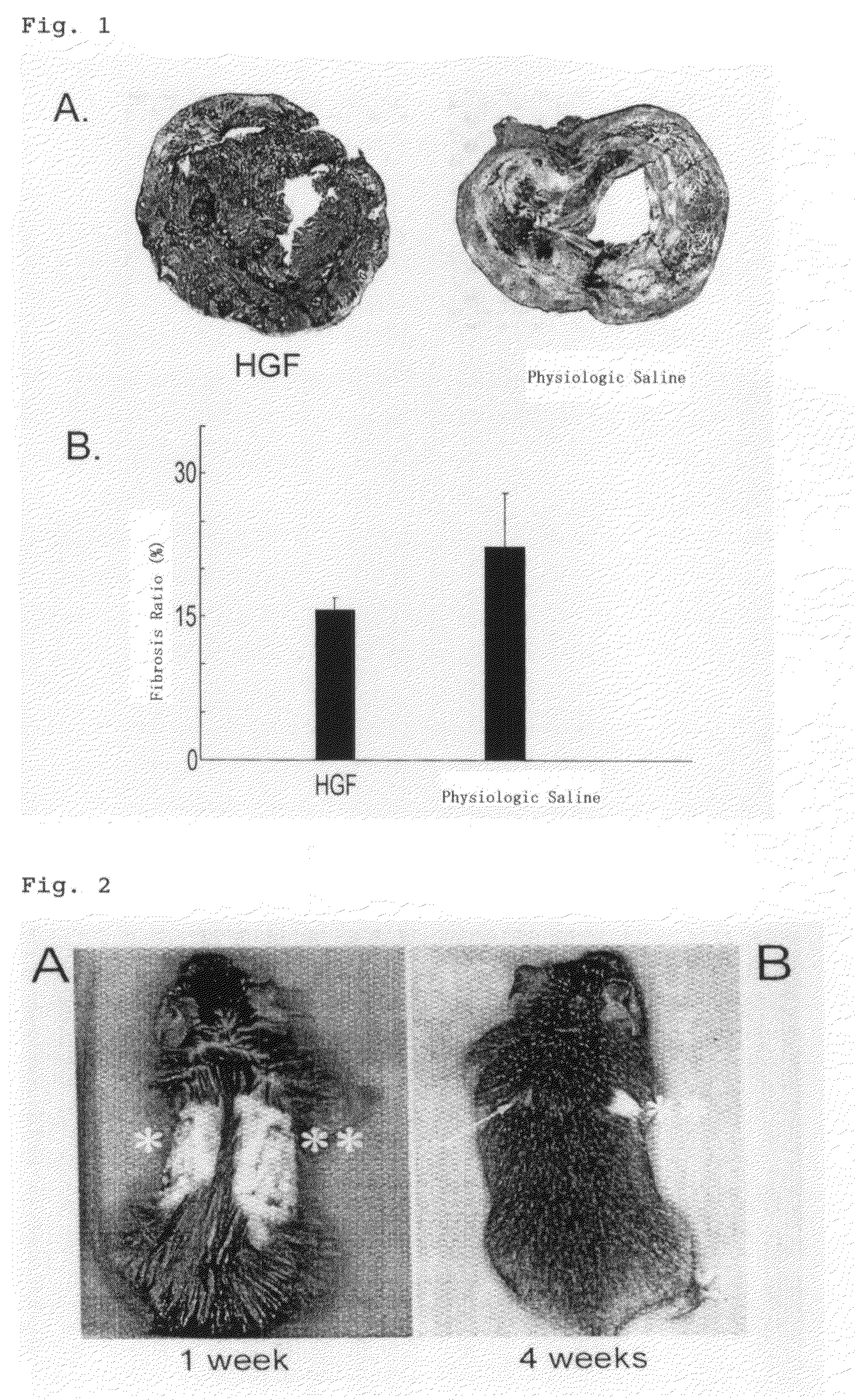Fibrosis inhibitor for implanted organ
a technology for implanted organs and inhibitors, which is applied in the field of medical drugs, can solve the problems of affecting the fibrosis of transplanted organs is far from being suppressed, and the transplanted organs have been undergoing gradual fibrosis, so as to suppress the fibrosis of transplanted organs, and suppress the rejection of transplan
- Summary
- Abstract
- Description
- Claims
- Application Information
AI Technical Summary
Benefits of technology
Problems solved by technology
Method used
Image
Examples
example 1
[0072]Suppressory effect on the fibrosis of the cardiac muscle in a mouse having the heart transplanted.
(1) Generation of a Heart Transplanted Model:
[0073]Used were 8-weeks aged, male mice weighing ca. 20 g of two species (BALB / c and C3H / He mice). A BALB / c mouse used as a donor animal were kept under anesthesia with the mixed drug of ketamine (100 μg / kg) and xylazine (10 μg / kg), and the heart was subjected to perfusion with 1 mL of physiologic saline supplemented with 7.5% by mass of heparin and removed through excision to use as the heart for transplantation. A C3H / He mouse was maintained under anesthesia with the mixed drug consisting of ketamine (100 μg / kg) and xylazine (10 μg / kg), then subjected to laparotomy and allowed to undergo heterotopic transplantation of the heart for transplantation excised from the BALB / c mouse into the abdomen between the abdominal aorta and abdominal inferior venae cava under microscope.
(2) Administration of Immunosuppressive Drug and HGF
[0074]As an ...
example 2
Acquisition of Immunologic Tolerance
Method:
[0079]In the same manner as described under (1) of Example 1, using a BALB / c mouse as a donor animal, the heart was transplanted from the BALB / c mouse to a C3H / He mouse in the abdomen between the abdominal aorta and abdominal inferior venae cava. Immediately after the transplantation, a solution (0.2 mL; 250 μg of HGF / kg) as prepared by dissolving 1 mg of HGF in 20 mL of physiologic saline started, and continued, being administered subcutaneously to the animals at the regular interval of 12 hours (500 μg / kg / day) for 14 consecutive days with use of a Gauge 27 needle for injection. The survived mouse 60 days after the transplantation was subjected to skin excision from the back, followed by transplantation of a 1-cm2 skin piece removed from a BALB / c or C57BL / 10 mouse into the skin-excised portion.
Results:
[0080]In the C3H / He mouse, which had survived for 60 days after transplantation of the heart, followed by transplantation of a piece of the ...
PUM
| Property | Measurement | Unit |
|---|---|---|
| temperature | aaaaa | aaaaa |
| diameter | aaaaa | aaaaa |
| diameter | aaaaa | aaaaa |
Abstract
Description
Claims
Application Information
 Login to View More
Login to View More - R&D
- Intellectual Property
- Life Sciences
- Materials
- Tech Scout
- Unparalleled Data Quality
- Higher Quality Content
- 60% Fewer Hallucinations
Browse by: Latest US Patents, China's latest patents, Technical Efficacy Thesaurus, Application Domain, Technology Topic, Popular Technical Reports.
© 2025 PatSnap. All rights reserved.Legal|Privacy policy|Modern Slavery Act Transparency Statement|Sitemap|About US| Contact US: help@patsnap.com

